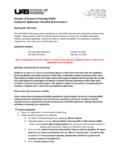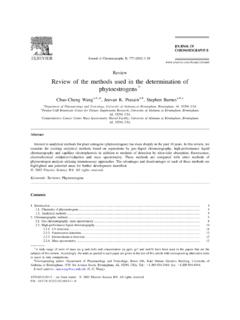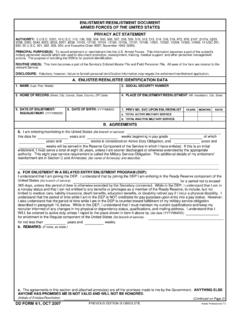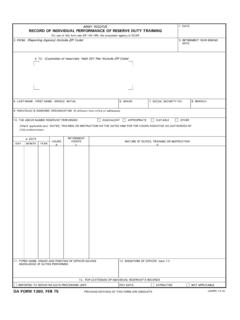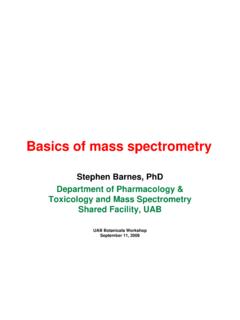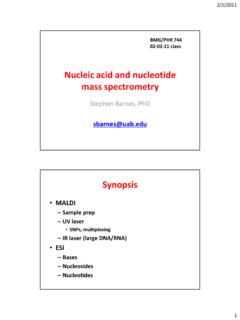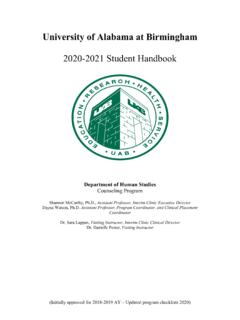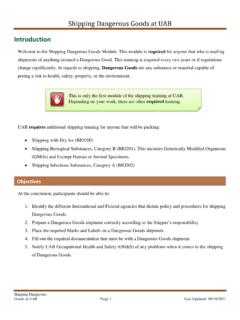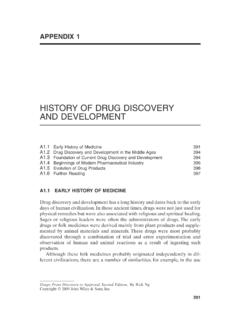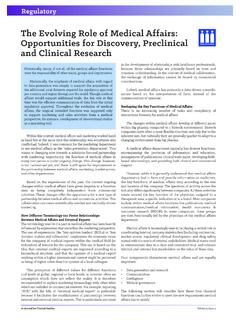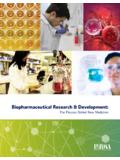Transcription of Pharmacokinetics/ADME In Drug Discovery
1 Pharmacokinetics/ADMEP harmacokinetics/ADMEIn drug DiscoveryAnExampleAn ExampleIdentified a new compoundfor memory lossAnimalstudiesAnimal studiesPK/ADME in drug DiscoveryOiOverview PharmacokineticsabsorptiondistributionPh armacokinetics, absorption, distribution, metabolism, elimination Pharmacodynamics Pharmacodynamics Why these are important in early research, targetvalidationanddiscoveryprogramstarg et validation and Discovery programs When should they be determined Early in the process Examples drug Development Nine of every ten new drugs fail in clinical testing. AdruginphaseIIItestinghas32%chanceoffail ure A drug in phase III testing has 32% chance of failure. Even in Phase I, 37% fail. Most drugs fail in phase II. Why Laboratory rat and mice strains are too genetically homogeneous The animal model is wrong, or the theory behind the disease is wrong The pharmacology is done incorrectlypgyy Other reasons?? Rats and humans have different metabolic pathways Thereareunforeseensideeffects There are unforeseen side effectsAttritionRateAttrition RateCompoundFailuresCompound FailuresAbsorption, Distribution, Metabolism and EiExcretion Absorption route of drug deliveryhbbd Where absorbed Distribution where does the drug go, where does it need to go and what are the implications Metabolism thiswilloccurandcouldimpactseveralvariab lesMetabolism this will occur and could impact several variables Could be used to your advantage Prodrugs Excretion how is the drug eliminated Pharmacokinetics is concerned with the variation in drug concentration with time as a result of absorption, metabolism, distribution and excretion Drugdose,routeofadministration,rateandex tentofabsorption,distributionDrug dose, route of administration, rate and extent of absorption, distribution rate (particularly to site of action)
2 And rate of elimination Pharmacokineticsmay be simply defined as what the body does to the drug Pharmacodynamicsdefined as what the drug does to the bodyDrugDelivery EnteralRoutesDrug Delivery EnteralRoutes Oral by far the most common route. The passage of drug from the gut into the blood is influenced by biologic and physicochemical properties. Sublingual (buccal) Certain drugs are best given beneath the tongue or retained in the cheek pouch and are absorbed from these regions into the local circulation. Rectal The administration of suppositories is usually reservedforsituationsinwhichoraladminist rationisreserved for situations in which oral administration is difficult. This route is more frequently used in small children. ParentalRoutesParental Routes Intravenous injectionj Used when a rapid clinical response is necessary, , an acute asthmatic episode. Achieve relatively precise drug concentrations in the plasma, since bioavailability is not a concern.
3 Y Intra arterial injection Used in certain special situations, notably with anticancer drugs, in an effort to p,yg,deliver a high concentration of drug to a particular tissue. Typically, the injected artery leads directly to the target organ. Intrathecalinjection Intrathecalinjection The blood brain barrier limits the entry of many drugs into cerebrospinal fluid. life threatening, antibiotics, antifungals and anticancer drugs are given via lumbar puncture and injection into the subarachnoid (Cont)Parental (Cont) Intramuscular injection Drugs may be injected into the arm, thigh or buttocks. Subcutaneous injection Some drugs, notably insulin, are routinely administered SC. drug absorption is generally slower SC than IM, due to poorer vascularity. Inhalation Inhalation Volatile anesthetics, as well as many drugs which affect pulmonary function, are administered as aerosols. Drugs administered via this route are not subject to first pass liver metabolism.
4 Topical application Eye, intravaginal, intranasal, skin. Alleviationoflocalsymptoms Alleviation of local AbsorptionBi l i lFBiological Factors Membrane structure and function The cell membrane is a semi blli iditiihlpermeable lipoid sieve containing numerous aqueous channels, as well as a variety of specialized carrier molecules. Passivelipiddiffusionisprobablythemostim portantabsorptive Passive lipid diffusion is probably the most important absorptive mechanism. Lipid soluble drugs dissolve in the membrane, and are driven through by a concentration gradient across the membrane. Carrier mediated facilitated transport occurs for some drugs, particularly those which are analogs of endogenous compounds for which there already exist specific membrane carrier systems. For example, methotrexate, an anticancer drug which is structurally similar to folic acid, is actively transported by the folate membrane transport drug Absorption The blood supply draining the gut passes through the liver before reaching the systemic circulation.
5 First pass effect may reduce the amount of drug reaching the target tissue. bd drug binding Many drugs will bind strongly to proteins in the blood or to food substances in the gut. Plasmaproteinbindinillin reasetherateofpassi eabsorptionb Plasma protein binding will increase the rate of passive absorption by maintaining the concentration gradient of free drug . Food effectsAbsorptioncanbereducedbythepresen ceoffoodinthegut Absorption can be reduced by the presence of food in the gut Absorption can be enhanced by food (bile secretion) Some drugs are irritating and should be administered with meals to adverse Protein Binding Drugs can bind to plasma proteinsgpp Human serum albumin, lipoprotein, glycoprotein, and , and globulins Proteinbindingcaninfluencethedrug'sbiolo gical Protein binding can influence the drug s biological half life Fraction bound or free fraction Warfarin is 97% protein bound Free fraction is an important consideration when lookingatinvivoactivitylooking at in vivo activity Protein binding can have implications in drug druginterationsdrug interations DistributionDistribution Once in the blood, drugs are simultaneously distributed throughout thbddli i t dthe body and eliminated.
6 Distribution is much more rapid than elimination, accomplished via the circulation, and influenced by regional blood flow. CompartmentsCompartments Central Compartment The central compartment includes the well perfused organs and tissues (heart, blood, liver, brain and kidney) with which drug equilibrates rapidly. Peripheral Compartment(s) The peripheral compartment(s) include(s) those organs ( , adipose and skeletal muscle) which are less well perfused, and with which drug therefore equilibrates more slowly. Special Compartments The cerebrospinal fluid (CSF) and central Spec aCo pa t e tsece eb osp aud(CS )adce t anervous system (CNS) is restricted by the structure of the capillaries and pericapillary glial cells. Drugs also have relatively poor access to pericardial fluid, bronchial secretionsandfluidinthemiddleearsecretio ns and fluid in the middle iDrug Transformation Phase I and Phase II metabolism Most products of drug metabolism are less active than the parent compound.
7 Metabolites may be responsible for toxic, mutagenic, teratogenic or carcinogenic effects Forexample,acetaminophenhepatotoxicityis duetoaminorFor example, acetaminophen hepatotoxicityis due to a minor metabolite which reacts with liver proteins. Metabolismofso calledprodrugs,metabolitesareactuallyMet abolism of socalled prodrugs, metabolites are actually the active therapeutic compounds Cyclophosphamide, an inert compound which is metabolized by the liver into a highly active anticancer of drug Metabolism The liver is the primary organ of drug pyggmetabolism. The gastrointestinal tract is the most important extrahepaticsiteextrahepaticsite Some orally administered drugs ( , isoproterenol) are conjugated extensively in the intestinal epithelium, resulting in decreased bioavailability. The lung, kidney, intestine, skin and placenta can alsocarryoutdrugmetabolizingreactionsals o carry out drug metabolizing reactions Lung has an enormous perfusion rate and may exert a first pass effect for drugs administered I Metabolism MostenzymesinvolvedindrugmetabolismMost enzymes involved in drug metabolism are located within the lipophilic membranes of the smooth endoplasmic reticulum (SER).
8 Microsomal preps can be isolated and used to evaluate new compounds (rat, dog, human i)microsomes) Most of the enzymes carry out oxidation reactions (mixedfunctionoxidaseMFO)andrequirea(mix ed function oxidase, MFO) and require a reducing agent (NADPH), molecular oxygen, and a complex of microsomal enzymes) CytochromeP450 EnzymesCytochrome P450 Enzymes Cytochrome P450, a hemeprotein so named y,pbecause its carbon monoxide derivative absorbs light at 450 nmlfhhdfflhd Family of enzymes which differ primarily with regard to their substrate specificities (70 distinct P450 genes)genes) Critical for assessing drug drug interactions Induction or inhibition Fluorescent assays looking at the enzymes, microsomal assays, cultured hepatocytesCytochromeP450 sCytochrome P450 sP450 Gene Family/Subfamily Characteristic Substrates Characteristic Inducers Characteristic Inhibitor AcetominophenEt di lTobacco, Char-Grilled Cimetidine, Amiodarone, CYP 1A2 EstradiolCaffeine Tobacco, CharGrilled Meats, Insulin Cimetidine, Amiodarone, TiclopidineCYP 2C19 Diazepam, OmeprazoleProgesteronePrednisone , RifampinCimetidine, Ketoconazole, OmeprazoleProgesterone CYP 2C9 TamoxifenIbuprofen FluoxetineRifampinSecobarbitalFluvastati n, Lovastatin, IsoniazidDebrisoquineCYP 2D6 DebrisoquineOndansetronAmphetamine DexamethasoneRifampinCimetidine, Fluoxetine ,Methadone CYP 2E1 Ethanol, Benzene Halothane Ethanol IsoniazidDisulfiram, Water Cress CYP 3A4, 5, 7 Cyclosporin.
9 ClarithromycinHydrocortisone SimvastatinBarbiturates GlucocorticoidsCarbamazepineSt. John s WortCimetidine, larithromycinKetoconazole, Grapefruit Juice , many others PhaseIIMetabolismPhase II Metabolism Phase I reactions convert a drug to a more polar compound by it d ikilftilhOHintroducing or unmasking polar functional groups such as OH, NH2, or SH. PhaseIproductsarestillnoteliminatedrapid lyandhenceundergo Phase I products are still not eliminated rapidly, and hence undergo Phase II reactions involving conjugation of the newly established polar group with endogenous compounds such as glucuronic acid, sulfuric acid, acetic acid, or amino acids (typically glycine). Glucuronide formation is the most common phase II reaction. Sometimes, the parent drug may undergo phase II conjugation directly. A drug may undergo a series of consecutive reactions resulting in the formation of dozens of metabolites. ADME ASSAYSS olubilityOral absorption Rate of dissolution Oral absorption Mbbilit(PAMPAM embrane permeability (PAMPA, cell models (CaCo2, MDCK) Oral absorption and BBB penetration Active transport Oral absorption and drug drug interaction interactionIonisation Constant (pKa) Oral absorption and binding mechanism Lipophilicity(LogP,LogD)Oral absorption, cell membrane dbLipophilicity (LogP, LogD) penetration, distribution Chemical stability Chemical integrity in body fluids, tissues and oral absorption MetabolicclearanceBioavailabilityandclea ranceMetabolic clearance Bioavailability and clearance CYP450 inhibition Metabolism and drug drug interaction Protein binding Clearance, distribution and bioavailabilitybioavailability Metabolite Identification Metabolic mechanism drug likeMoleculesDruglike Molecules Good ADME properties Rule of 5 Rlf45?))
10 Rule of MW <500, ClogP 5, H bond donors, 5 H bond acceptors (sum of N and O atoms) 10 Remarks: No more than one violation; not applicable for substrates of transporters and natural products Extensions Extensions Polar surface area, sum of H bond donors, and acceptors, rotatable bondsDruglikenessDruglikeness Optimal solubility to both water and fatpy Orally administered drug has to go through the intestinal lining, carried in aqueous blood and penetrate the lipid cellularmembranetoreachtheinsideofacellc ellular membrane to reach the inside of a cell. cLogP, is used to estimate solubility. High potency (IC50or EC50) Reduces the risk of non specific, off target pharmacology at a given concentration Lowclearance,highpotencyalsoallowsforlow totaldose,Low clearance, high potency also allows for low total dose, which lowers the risk of idiosyncratic drug reactions The less you give the betterCNS Target ExampleAssayProgressionSchemeAssay Progression SchemeSH-SY-5Y DRCLQT1+minK, L-type Ca, hERG DRCSH-SY-5Y DRCLQT1+minK, L-type Ca, hERG DRCKCNQ2/Q3, KCNQ3/Q5 DRC (flux)In vitro selectivityKCNQ2/Q3, KCNQ3/Q5 DRC (flux)

